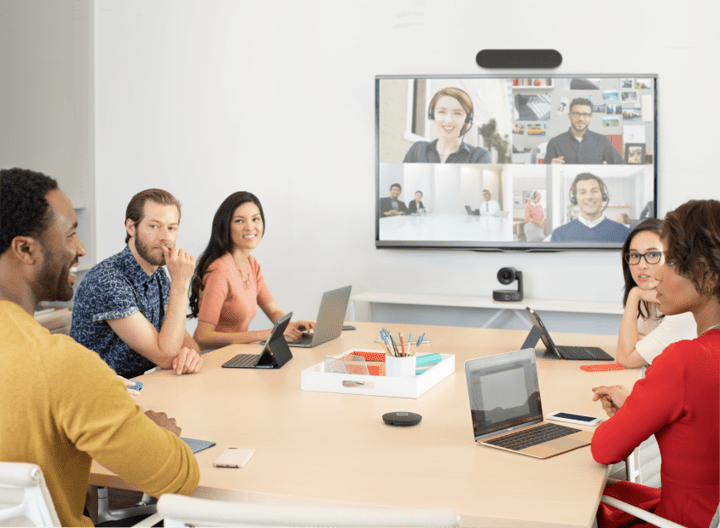The Basics
If you’re just now learning about video conferencing, there are a few basics to note. Laptop users are already set up with an onboard mic, speaker and camera. For those using a desktop computer, an external camera and microphone is needed to get started.
Presentation Is Key
Now that you’re set up to start your video call, you’ll want to ensure that lighting, sound and appearance are polished and presentable. Remember to turn on your lights (natural light works as well) so you’re well-lit and visible.
When entering a call, put yourself on mute and keep yourself on mute when you are not talking. This will help eliminate background noise.
Be aware of your background. Though you’re at home, you should still have a nice, presentable backdrop. Find a spot where décor is minimal and organized.
Take It Up a Notch
Once you have your basics in place, you can add a few bells and whistles to make your video conferencing really stand out.
Easily upgrade your audio with a personal headset with a built-in microphone. This will help eliminate ambient noise by bringing the mic closer to the user’s mouth.
Most webcams will compensate for low-lighting settings in your room. This should be enough for most users. But if you need to really step it up (perhaps for users that are creating video content over web cam) a few hue lights located around your space are a simple and inexpensive way to add an additional touch of professionalism.
Recording Your Meeting
Most video conferencing platforms offer a recording feature. This is ideal for sharing meetings and webinars with your colleagues or customers post meeting. Most platforms allow users to edit video, making it quick and easy to trim content or break it down into multiple pieces.
New Technology
Artificial intelligence is becoming a big player in video conferencing. Integration of this technology now allows for transcription of meeting audio to be used for closed captions. AI can also count the number of attendees on camera and scan faces to provide insight into the topics that physically resonate with attendees.
If you want to take things out of the office, Microsoft Teams has developed a technology called Microsoft Team Rooms. A user can enter a room dedicated to Teams conferencing and allows you to enter a conference without bringing a laptop to drive the meeting.
With the increase in demand for video conferencing, we expect to see more sensational developments in the near future. There’s no telling where video conferencing can go, but we’re excited to learn what’s next.



